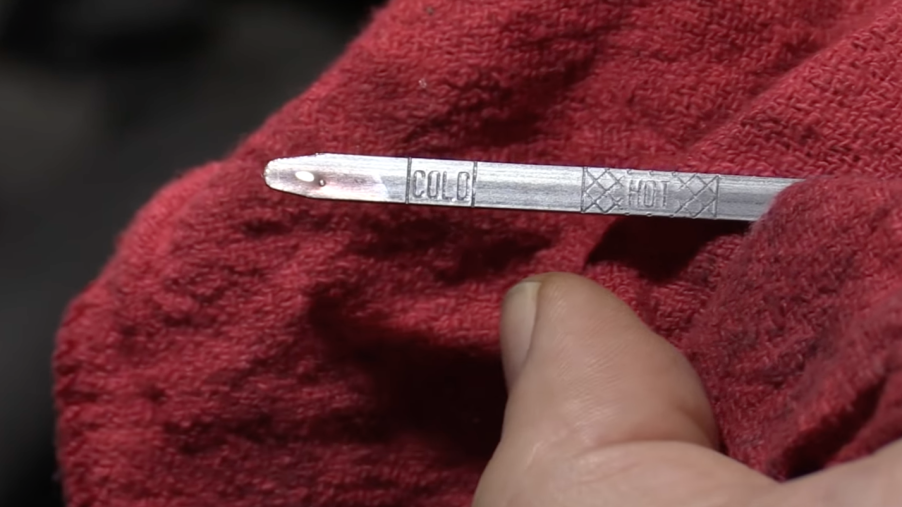
How to Check Transmission Fluid
Working on cars can be a lot of fun. However, not all jobs are a good time. Unfortunately, checking your transmission fluid is one of the unfun bits of maintenance, but that doesn’t mean you can get away with just not doing it. Despite the boring nature of this job, we can make it fun. Put some good tunes on your shop radio. If, for some reason, you don’t have a shop radio, stop reading this and go get one. It’s necessary. I recommend playing something that feels good, like Jerry Butler or Joe Cocker. Music on? Good. Here’s how to check your transmission fluid.
Is there a difference between changing automatic and manual transmission fluid?
Yes, there’s a difference. First of all, take note of the kind of transmission you are working with. Automatic transmissions and manual transmissions are different and require some different steps for changing the transmission fluid.
This isn’t a very long job. Most folks can get it done in less than half an hour. One of the best things you can do from the start to make the work go quickly and smoothly is to get all your tools organized and ready. Folks with Automatic transmissions won’t need too many tools. Unfortunately, our friends with three pedals are going to need a few more things.
Tool list:
3-ton floor jack
A pair of 3-ton jack stands
Socket set
Wheel chocks
Microfiber shop cloth
Rubber disposable gloves
Any of these tools can be found on Amazon or at your local auto parts and DIY shop.
What is the correct way to change your automatic transmission fluid?

Before doing anything else, you should start by looking at your car’s owner’s manual. There are some cars that have automatic transmissions that are sealed and not meant to check or change the transmission fluid. If you have one of these, your work is done.
If not, you’ll be looking for a dipstick. Before you pull the dipstick, you also need to consult your manual to see if your car needs to warm up first. This is a common requirement for many cars, but not all. If your car does require warming up, simply start the car and let it get to a normal operating temperature. The easiest way to do this is to take your car for a short drive. A few laps around the block should get you to the proper temp.
Once the vehicle is up to temp, park it on a flat surface. The next step is to put the car in park, engage the emergency brake, and pop the hood. Once you find the dipstick, you need to clean the area around the reservoir with the shop rag. If your manual calls for it, you might need to keep your car running while you check the transmission fluid.
You need to pull the dipstick and wipe off the fluid with a clean rag. Then put the stick back all the way down before pulling it out again. Now look at the markings on the dipstick to read the fluid levels. As long as you don’t have too much or too little fluid, you can put the cap back on tightly, close the hood, and your job is done.
What is the correct way to check transmission fluid on a manual transmission?

The process is pretty different for manual transmissions. You start the same way; check the car manual to see if you need the car to be warm or cold. Once you figure this step out, it’s time to get to work.
Checking manual transmission fluid requires more work. Unlike automatic transmissions, you have to lift your car and crawl up under it. Safety tip: Any time you lift your car, make sure it is on a level surface and chalk the wheels so it can’t move while lifted.
Now locate the fluid filler plug. This will look like a big bolt sticking out about halfway up the side of the transmission. Remove this plug. Again, unlike checking the transmission fluid on an automatic, there is no dipstick on manual cars. Here is the crude part. You’ll want gloves for this. Once you remove the plug, stick your finger in the hole to see the oil level. If your finger comes out dry, the level is too low.
Once you’ve checked the level and done what you need to, replace the plug bolt. Tighten this piece very carefully but with pressure. At this point, you can lower your car back to Earth.
Signs you many have low fluid
If it’s been a while since you’ve checked your transmission fluid levels, there are some signs that can tell you it’s low. Gears just won’t shift right and things will feel off if the fluid levels are too low. Any grinding, slippage or shaking when shifting might mean you need to check your fluid levels right away.
Overall, checking the levels is something many cable car owners can and will do themselves. If the fluid needs to be changed – or if there are other problems to address with the transmission – many car owners will want the help of a professional.





